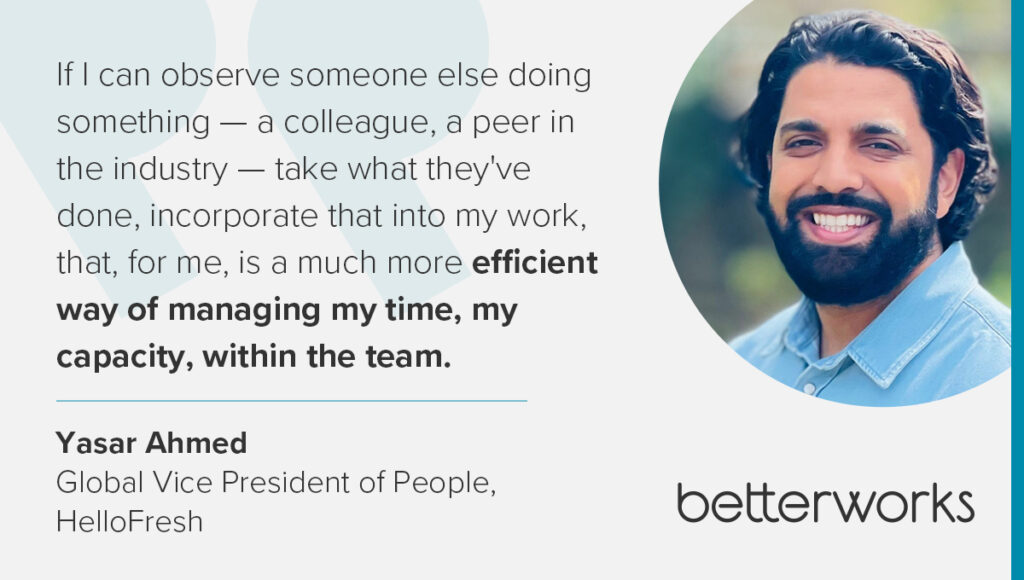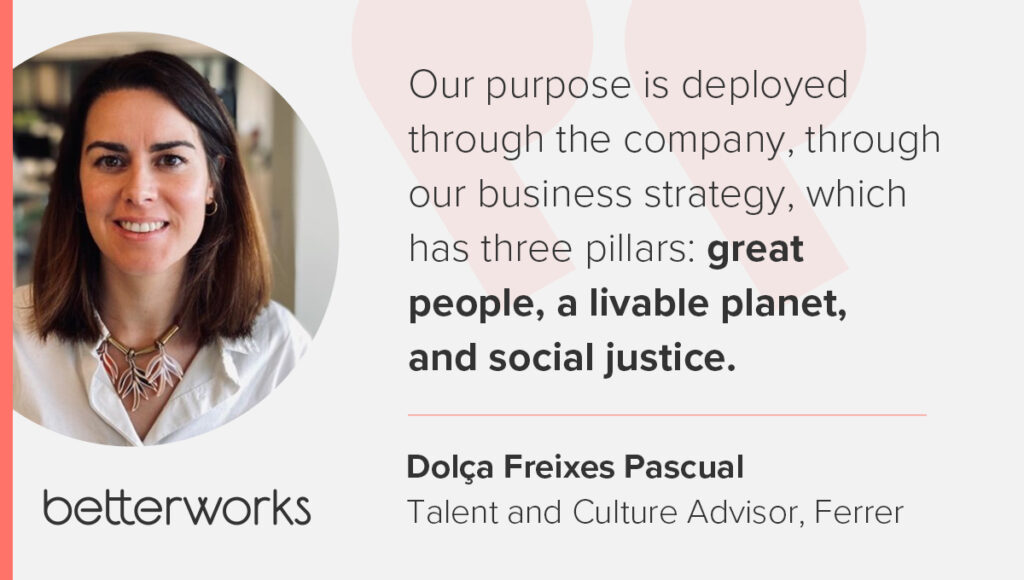As the role of HR has transformed into that of a strategic partner, HR professionals have become critical drivers of innovation in their organizations.
There’s no shortage of opportunities for that now: By embracing AI and automation, HR teams can streamline processes and focus on strategic talent initiatives. Data-driven decision-making enables organizations to enhance employee experience, engagement, and productivity. Agile performance management models promote continuous feedback and growth.
But that doesn’t mean every HR team approaches innovation in the same way or at the same pace. That’s why we invited Yasar Ahmad, global vice president of people at HelloFresh, and Dolça Freixes Pascual, talent and culture advisor at Ferrer, to join Jamie Aitken, VP of HR transformation at Betterworks, to share what innovation means for them at an EmpowerHR Europe panel.
Find the right pace of change
Every organization innovates at its own pace — the challenge is determining the right pace of change for your business.
Yasar and his team, for example, recognize the potential rewards of incorporating AI into HR processes, but they don’t consider themselves to be “early adopters.” Instead, Yasar has embraced the role of “fast follower,” which has allowed him to learn from the experiences of others. “If I can observe someone else doing something — a colleague, a peer in the industry — take what they’ve done, incorporate that into my work,” he said, “that, for me, is a much more efficient way of managing my time, my capacity, within the team.”
At Ferrer, Dolça sets a different pace for change. She and her team shifted from a one-size-fits-all approach to employee experience to a much more nuanced understanding of different employee experiences based on different roles and levels in the organization. Adopting this personalized approach inherently required them to think about change management in a more nuanced way, too.

Embed innovation in your culture
Embedding business innovation at the cultural level transforms it from a special project into a fundamental aspect of your organization’s identity, influencing every action and decision. This mindset ensures that innovation isn’t just an occasional endeavor but a continuous, deeply ingrained practice that shapes the way a company operates and evolves.
Ferrer, for example, is integrating its values into every aspect of organizational life, from decision-making to daily operations — an innovation that transforms the very fabric of the company. “Our purpose is deployed through the company, through our business strategy, which has three pillars: great people, a livable planet, and social justice,” she said.
Ferrer’s holistic approach to change ensures that innovation isn’t limited to advancements in technology, but also nurtures a workforce that’s motivated by a sense of purpose and committed to making a positive impact on the world. For example, Ferrer offers external mentoring to vulnerable youth who are at risk of dropping out of school. The program helps these young people discover their potential and reinvest in their education.

By embedding their values into their culture, organizations like Ferrer create a fertile ground for innovation, where employees are encouraged to think creatively and act with the company’s broader goals in mind.
Take a “human-shaped” approach
Major change is always hard work, but that burden can be easier to bear if you lean into HR innovations that resonate with your people’s needs rather than compete with them. By prioritizing the employee experience, you can make sure that changes enhance rather than complicate the daily work experience.
Yasar refers to this concept as seeking out “human-shaped” innovations, specifically when evaluating new technology. “Does it have some human likeness to it?” Yasar said. “Is it going to be awkward for the user? Is it going to be awkward for the stakeholder or candidate or whoever’s using it?”
Although Yasar’s advice referred to selecting tech tools, his “human-shaped” approach can inform broader change management decisions, too. Whether you’re implementing an innovation that fundamentally changes how the business operates or simply deploying a new AI tool on a small team, the decision affects someone. When applying innovations at work, look through the lens of empathy and user-friendliness, focusing on solutions that are naturally intuitive and supportive of human workflows.
Through carefully pacing change, embedding innovation into your cultural DNA, and adopting a “human-shaped” approach to innovation, you can foster a workplace that’s not only more efficient and productive but also more meaningful and fulfilling. As HR leaders, you play a pivotal role in driving business innovation while helping your people understand and adapt to change.
Want to learn more? Catch EmpowerHR on demand to hear more perspectives on the changes and challenges facing HR leaders today.
Hear more from EmpowerHR Europe


